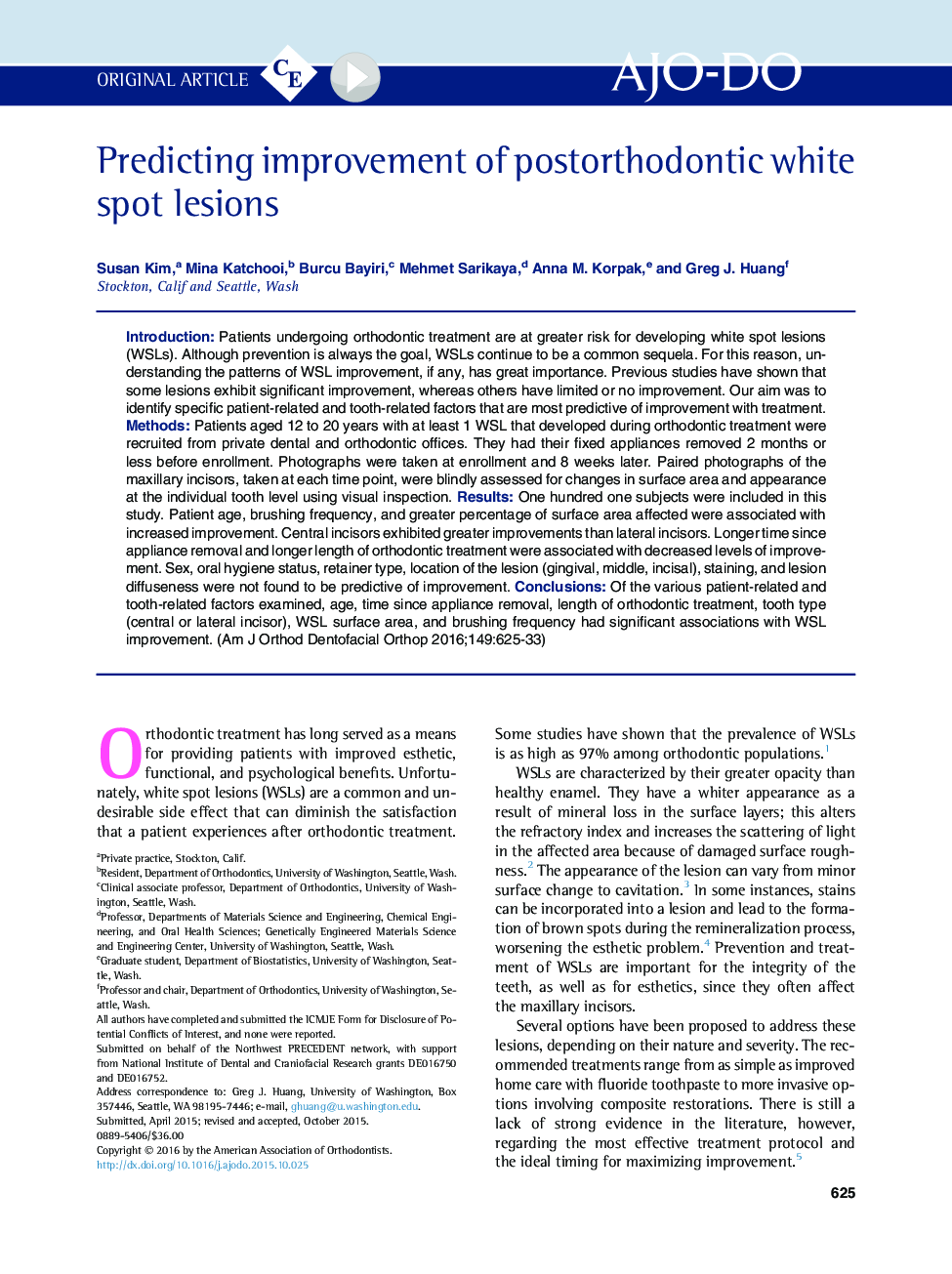| Article ID | Journal | Published Year | Pages | File Type |
|---|---|---|---|---|
| 3115295 | American Journal of Orthodontics and Dentofacial Orthopedics | 2016 | 9 Pages |
•White spot lesions (WSLs) are a common sequela of orthodontic treatment.•WSLs seem to improve in the months after orthodontic appliances are removed.•Predicting the amount of improvement is challenging.•Time since appliance removal may be an important predictive factor.•Factors such as depth of lesion or patient's diet might influence the improvement.
IntroductionPatients undergoing orthodontic treatment are at greater risk for developing white spot lesions (WSLs). Although prevention is always the goal, WSLs continue to be a common sequela. For this reason, understanding the patterns of WSL improvement, if any, has great importance. Previous studies have shown that some lesions exhibit significant improvement, whereas others have limited or no improvement. Our aim was to identify specific patient-related and tooth-related factors that are most predictive of improvement with treatment.MethodsPatients aged 12 to 20 years with at least 1 WSL that developed during orthodontic treatment were recruited from private dental and orthodontic offices. They had their fixed appliances removed 2 months or less before enrollment. Photographs were taken at enrollment and 8 weeks later. Paired photographs of the maxillary incisors, taken at each time point, were blindly assessed for changes in surface area and appearance at the individual tooth level using visual inspection.ResultsOne hundred one subjects were included in this study. Patient age, brushing frequency, and greater percentage of surface area affected were associated with increased improvement. Central incisors exhibited greater improvements than lateral incisors. Longer time since appliance removal and longer length of orthodontic treatment were associated with decreased levels of improvement. Sex, oral hygiene status, retainer type, location of the lesion (gingival, middle, incisal), staining, and lesion diffuseness were not found to be predictive of improvement.ConclusionsOf the various patient-related and tooth-related factors examined, age, time since appliance removal, length of orthodontic treatment, tooth type (central or lateral incisor), WSL surface area, and brushing frequency had significant associations with WSL improvement.
